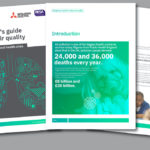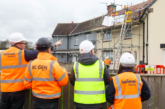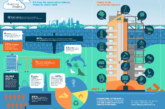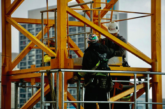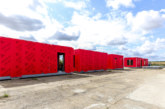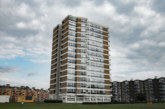The return of thousands of children to schools in England next week has reignited the debate about how best to minimise the risk of virus transmission including the need for better ventilation, according to the Building Engineering Services Association (BESA).
The Association believes that decades of under-investment in school buildings has been brought sharply into focus by the pandemic. It says current strategies focused around ‘natural’ ventilation are not adequate for dealing with the current health emergency or to give school children the healthy conditions they need for the future.
It is calling for investment in ‘low-cost engineering solutions’ that will give schools control over the indoor air quality (IAQ) so they can provide improved conditions for teaching and learning; and be better prepared for future health emergencies.
Two members of the Government’s Scientific Advisory Group for Emergencies (SAGE) have also publicly stated their concerns about the current state of ventilation in schools.
Professor Calum Semple from the University of Liverpool said schools would be better advised to invest in ventilation than force children to wear masks. Calum, who is also a Consultant Respiratory Paediatrician at Alder Hey Children’s Hospital told Radio 4: “If I had to invest in a single activity to improve the environment both for the children and adults, I’d be looking at improving the ventilation.”
Fellow SAGE Member and Building Ventilation Specialist Cath Noakes said that “engineered solutions” should sit above measures that rely on human behaviour such as distancing and wearing face coverings in any “hierarchy of risk control”.
Dependent
“The spaces that worry me the most are those that are naturally ventilated as these are temperature and wind dependent,” the University of Leeds Professor told a recent BESA webinar.
BESA also questioned the national media’s use of architects to give advice on the subject.
“They are not the profession charged with making buildings work, live and, in effect, breathe,” said the Association’s Head of Technical Graeme Fox. “That is the responsibility of engineers. Architects tend to focus on the aesthetics and how the spaces work. This gives them an affinity to natural ventilation, which they also champion as part of the net zero carbon agenda.”
Fox explained that opening windows during colder months would increase a school’s carbon footprint because heat from classroom radiators would be wasted. It also did not guarantee the necessary air change rates needed to reduce the risk of transmitting the virus between teachers, children, and parents.
“Natural ventilation is completely temperature and wind direction dependent and likely to leave unventilated, stagnant spots around the room. That poor child sitting shivering by the window might be protected, however,” Graeme said.
Mechanical ventilation solutions
With the Department for Education (DfE) about to embark on an ambitious school refurbishment and re-building programme backed by £7bn worth of funding over the next 10 years, BESA said now was the time to consider mechanical ventilation solutions capable of tackling future health crises and providing indoor air of sufficient quality to improve conditions in thousands of classrooms.
“The key factor with an engineered mechanical ventilation approach is giving the user control over the air movement,” said Nathan Wood, Chair of BESA’s Health & Wellbeing in Buildings group. “The path taken by air is critical and will be different depending on the layout of the space and the occupancy levels. Opening windows gives you no control over the direction of the outside air and no opportunity to filter it to remove potentially harmful pollutants coming in from outside.”
However, the solutions needed to protect schools and equip them for the future would have to be simple to operate and low cost, Nathan explained.
“There are around 24,500 schools in the UK and only a fraction have any real control over their ventilation. Even some of those with bigger budgets have ended up with highly sophisticated mixed systems that don’t work properly because they were poorly designed or badly maintained.
“As the SAGE scientists have demonstrated, we need a series of bespoke but affordable solutions to crack this problem and the ventilation industry is working on it — but it will require investment from central and local government to give schools the support they need,” said Nathan.
BESA said this had wider implications for all public and communal buildings and for giving people confidence to return to offices, restaurants, gyms etc
“Engineered solutions will be essential in demonstrating that a building is safe now and will be safe when the next public health emergency hits,” said Graeme. “If central and local government do not believe this is worth investing in now, when we are fighting a deadly airborne virus, then you have to ask: “When?”
BESA and Mitsubishi Electric have jointly published a ‘Beginners Guide’ to improving Indoor Air Quality’, which provides basic guidance for building users and managers. This digital publication is a comprehensive, but non-technical overview aimed at a non-specialist audience such as school management teams and can be downloaded for free here.

